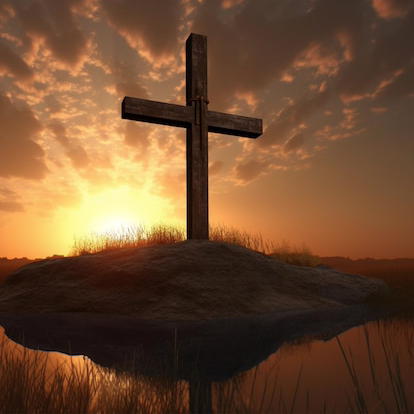Navigation
Install the app
How to install the app on iOS
Follow along with the video below to see how to install our site as a web app on your home screen.
Note: This feature may not be available in some browsers.
More options
Style variation

-

-

-

-

-

-

Desire to be a vessel of honor unto the Lord Jesus Christ?
Join For His Glory for a discussion on how
https://christianforums.net/threads/a-vessel-of-honor.110278/
-

-

-
Focus on the Family
Strengthening families through biblical principles.
Focus on the Family addresses the use of biblical principles in parenting and marriage to strengthen the family.
Read daily articles from Focus on the Family in the Marriage and Parenting Resources forum.
You are using an out of date browser. It may not display this or other websites correctly.
You should upgrade or use an alternative browser.
You should upgrade or use an alternative browser.
Moved back outwest. New problems.
- Thread starter John
- Start date
jasoncran
Member
- May 17, 2009
- 38,271
- 185
we called that african hot! when i was at ft.stewart.Lewis W said:Well you know I lived in Brunswick Georgia, so I know hot, but even here in Philly it gets around 95, 98 and 100 degrees a lot in the summer.
Lewis
Member
- Aug 5, 2005
- 15,483
- 621
That's about right, African hot.jasoncran said:we called that african hot! when i was at ft.stewart.Lewis W said:Well you know I lived in Brunswick Georgia, so I know hot, but even here in Philly it gets around 95, 98 and 100 degrees a lot in the summer.
- Thread starter
- #46
I just delicined the job offer. after much reasearch i found that Kuujjuaq broke every parameter i set during my interveiw with the Northwest Company. I said i wanted to relocate to a place that was in the tree line, had mountians or at least hills and preferably western Canada. Kuujjuaq is flat, barren and bleek. No way could i have a carreer there even if they were paying 100$/hr. I only want 3 things: my dog, a good job and a decent place to live. Jasper gives me a good job but crappy place to live and no dog while Kuujjuaq gives me just my dog....it aignt gonna fly.
jasoncran
Member
- May 17, 2009
- 38,271
- 185
lol, john in philly. well he would love the philly cheese steaks and then the independance hall would be awesome.Lewis W said:John I will pick you and the dog up at the airport here in Philadelphia, see you when you get here, have a nice flight
Lewis
Member
- Aug 5, 2005
- 15,483
- 621
Very much sojasoncran said:do they allow dogs in their?
Lewis
Member
- Aug 5, 2005
- 15,483
- 621
Fairmount Park is just to darn big to keep dogs out of it, miles and miles and miles of woods how can you keep dogs and their owners out of that, plus stray dogs run all over the park. Oh and John the park is loaded with Canadian geese, and they have become a problem, around the river, streams, and ponds in Fairmount Park.
Vic C.
Member
- Mar 16, 2003
- 18,230
- 4
Man you Phiadelphians!  Because it is officially part of Phoenix, Ar., this is the largest park:
Because it is officially part of Phoenix, Ar., this is the largest park:
http://phoenix.gov/parks/hikesoth.html
16,000 + acres. :o
Philly has the largest city park in the world Vic my good brother :yes
 Because it is officially part of Phoenix, Ar., this is the largest park:
Because it is officially part of Phoenix, Ar., this is the largest park:http://phoenix.gov/parks/hikesoth.html
16,000 + acres. :o
Philly has the largest city park in the world Vic my good brother :yes
Lewis
Member
- Aug 5, 2005
- 15,483
- 621
Man you Phiadelphians!  Because it is officially part of Phoenix, Ar., this is the largest park:
Because it is officially part of Phoenix, Ar., this is the largest park:
http://phoenix.gov/parks/hikesoth.html
16,000 + acres. :o
Philly has the largest city park in the world Vic my good brother :yes
FAIRMOUNT PARK
Extends along both East and West banks of Schuylkill River and Wissahickon Creek, from Art Museum at Spring Garden Street to Northwestern Avenue
Placed on the National Register of Historic Places February 7, 1972.
Beginning with the acquisition of the five acres at Fairmount for the Waterworks and reservoir, now the site of the Art Museum, the Park was gradually extended by the purchase, first of Lemon hill and Sedgley in 1856, and then by the addition of about 220 acres at Lansdowne and George's Hill in the 1860's. Still later additions have brought the Park area up to some 4100 acres along both banks of the Schuylkill and the Wissahickon. (The Wissahickon Valley is a Registered National Natural Landmark.)
In 1876 the Lansdowne and George's Hill segments became the site of the Centennial Exhibition. Memorial Hall and Ohio House remain to remind present-day visitors of this great fair. At about the same time the Zoological Gardens (in 1874) were opened to the public. Today, the Playhouse in the Park offers Philadelphians theatre-in-the-round, and Robin Hood Dell, the chance to hear the Philadelphia Orchestra. [Sic: the Playhouse is no more and the orchestra now plays at the "new" Mann Music Center] Picnic areas, a golf course at Walnut Lane; swimming, both indoors at Memorial Hall [Sic: no more] and outdoors at the nearby Kelly Pool; fishing in the Wissahickon, and boating on the Schuylkill, a sport made famous by the paintings of Thomas Eakins (1844-1916), add a variety to the rural walks, bicycle paths, and other more usual features of a large urban park.
Statement of Significance
Despite a variety of such modern encroachments as the Schuylkill expressway, Philadelphia's Fairmount remains unequalled among American municipal parks for its combination of unusual size, natural beauty, historical importance, and the interest and merit of the buildings and sculpture it contains.
Although advice was sought from such nationally prominent landscape architects as Robert Morris Copeland of Boston and Olmsted & Vaux of New York, the park in its present form cannot be said to be the work of any one man. Nor is it easy to assign a single date to its establishment. Legislation formally setting aside a large area bordering the Schuylkill "forever, as an open public place" was not passed by the Pennsylvania Assembly until 1867, but the origins of the park are to be found at least half a century earlier in the five acres that first surrounded the Schuylkill Waterworks, begun in 1812; in this sense, at least, Fairmount should probably be considered the earliest public park in America, apart from the city square and the colonial common. To protect the purity of the city's water supply and to provide for the "health and enjoyment" of its citizens, the area reserved for public use was gradually extended from this modest beginning until it became one of the largest--some would say the largest--municipal park in the world.
No longer the source of Philadelphia's water supply and now somewhat neglected, enough remains of the unusual group of late Federal and early Classical Revival buildings that comprised the Waterworks to make it clear why even Charles Dickens had kind words to say concerning its beauty and why innumerable artists have found it and the little park surrounding it to be among the most "picturesque" of American subjects. With the acreage gradually added to this nucleus came numerous other buildings, at least a dozen of which are recognized as being of primary historical and stylistic importance: "Lemon Hill" (c. 1800), one of two outstanding Federal houses in Philadelphia and one equaled by few examples in the country; "Woodford" (1750's, enlarged 1772), Judge Coleman's mid-Georgian mansion, which now houses the superb Naomi wood collection of 18th-century furnishings; Judge William Peters' "Belmont" (main portion built c. 1775), the woodwork and plaster ceilings of which are among the handsomest of the period and the area; "Strawberry Mansion" (built 1797, enlarged 1825), now restored to something of its former grandeur by the women of the Committee of 1926; John Penn's "Solitude" (c. 1785) with its superb plaster ceiling in the Adam manner; "Sweetbrier" (1797), Samuel Breck's attractive country house, which, despite the loss of its gardens and dependencies, still remains an outstanding example of the sophisticated simplicity that characterizes the best late 18th-century architecture; and of course "Mount Pleasant' (begun 1761), which has been called the "finest Georgian mansion north of the Mason-Dixon line."
Following the Civil War, the park was extended to the west bank of the Schuylkill in time to provide the location for the Centennial Exhibition in 1876. The demolition about 1955 of Horticultural Hall, one of the two "permanent" buildings of the Centennial, was a tragic and irreparable loss to the city and to the nation, but Memorial Hall (now repaired and used as a recreation center) still stands, as does the Ohio House, the only one of the structures erected for the Centennial by each of the states to remain in situ. Nearby are the gardens of the Zoological Society (chartered 1859 and therefore said to be the first such organization in North America), which were opened on their present site in 1874 and which still retain a number of important buildings, including the original entrance pavilions designed by the Philadelphia firm headed by Frank Furness, certainly one of the most talented of Victorian architects.
Not the least of the original attractions of the little park that surrounded the Philadelphia Waterworks was William Rush's Nymph and Bittern Fountain (now cast in bronze and removed to the Philadelphia Museum of Art, nearby). Through the generosity of the Fairmount Park [Art] Association and other private groups and individuals, works of sculpture have continued to add appreciably to the interest and beauty of the expanded park. A number of these like Herman Kirn's Catholic Total Abstinence Fountain, erected for the Centennial, or the Civil Was Memorial Gate (gift of Richard Smith, erected 1897-1912) are perhaps more to be wondered at than admired, but others like Randolph Rogers' Lincoln Monument (1871), Augustus St. Gaudens' Garfield Memorial (1896), Daniel Chester French's statue of General Grant, Cyrus E. Dallins' Medicine Man, or Frederic Remington's Cowboy are major examples of the work of some of America's most talented sculptors.
If only because of its appeal to young and old alike, the scholar who would study its sculpture and buildings, no less than the city dweller who would escape the heat and squalor of his surroundings, Fairmount Park probably offers more toward the enrichment of contemporary life than does any other of Philadelphia's many contributions to the arts of America.
Some facts about
FAIRMOUNT PARK, PHILADELPHIA
* It was the first major urban park in America, dated back to 1812.
* It is the largest urban park in the United States.
* It is generally considered the finest urban park in the United States, and possibly in the world. It is without doubt the world's greatest 19th century city park.
* It was originally created to protect the supply of clean water; a pioneer effort in the conservation and ecology movement.
* It already contains a number of officially designated Historic landmarks including the Wissahickon Valley, Mount Pleasant and Woodford Mansions.
* It also contains numerous buildings certified by the Historic American Buildings Survey including: Belmont Mansion; Cedar Grove; Chamounix; Letitia Street House; Lemon Hill; Memorial Hall; Tom Moore Cottage; Ormiston; Ridgeland; Rockland; Solitude; Strawberry Mansion; Sweetbrier; Woodford, and others. [Sic: not all of these remain standing]
* It also contains numerous historic and famous statues including: Rodin's The Thinker; Remington's Cowboy; Fremiets's Jeanne D'Arc; J. Massey Rhind's Tedyuscung; Alexander Calder's Swann Memorial Fountain figures, and others.
* It contains America's first zoo.
* It was the site of America's first International Exhibition; the United States' Centennial Celebration in 1876.
* It is one of the major arboretums in the United States.
 Because it is officially part of Phoenix, Ar., this is the largest park:
Because it is officially part of Phoenix, Ar., this is the largest park:http://phoenix.gov/parks/hikesoth.html
16,000 + acres. :o
Philly has the largest city park in the world Vic my good brother :yes
FAIRMOUNT PARK
Extends along both East and West banks of Schuylkill River and Wissahickon Creek, from Art Museum at Spring Garden Street to Northwestern Avenue
Placed on the National Register of Historic Places February 7, 1972.
Beginning with the acquisition of the five acres at Fairmount for the Waterworks and reservoir, now the site of the Art Museum, the Park was gradually extended by the purchase, first of Lemon hill and Sedgley in 1856, and then by the addition of about 220 acres at Lansdowne and George's Hill in the 1860's. Still later additions have brought the Park area up to some 4100 acres along both banks of the Schuylkill and the Wissahickon. (The Wissahickon Valley is a Registered National Natural Landmark.)
In 1876 the Lansdowne and George's Hill segments became the site of the Centennial Exhibition. Memorial Hall and Ohio House remain to remind present-day visitors of this great fair. At about the same time the Zoological Gardens (in 1874) were opened to the public. Today, the Playhouse in the Park offers Philadelphians theatre-in-the-round, and Robin Hood Dell, the chance to hear the Philadelphia Orchestra. [Sic: the Playhouse is no more and the orchestra now plays at the "new" Mann Music Center] Picnic areas, a golf course at Walnut Lane; swimming, both indoors at Memorial Hall [Sic: no more] and outdoors at the nearby Kelly Pool; fishing in the Wissahickon, and boating on the Schuylkill, a sport made famous by the paintings of Thomas Eakins (1844-1916), add a variety to the rural walks, bicycle paths, and other more usual features of a large urban park.
Statement of Significance
Despite a variety of such modern encroachments as the Schuylkill expressway, Philadelphia's Fairmount remains unequalled among American municipal parks for its combination of unusual size, natural beauty, historical importance, and the interest and merit of the buildings and sculpture it contains.
Although advice was sought from such nationally prominent landscape architects as Robert Morris Copeland of Boston and Olmsted & Vaux of New York, the park in its present form cannot be said to be the work of any one man. Nor is it easy to assign a single date to its establishment. Legislation formally setting aside a large area bordering the Schuylkill "forever, as an open public place" was not passed by the Pennsylvania Assembly until 1867, but the origins of the park are to be found at least half a century earlier in the five acres that first surrounded the Schuylkill Waterworks, begun in 1812; in this sense, at least, Fairmount should probably be considered the earliest public park in America, apart from the city square and the colonial common. To protect the purity of the city's water supply and to provide for the "health and enjoyment" of its citizens, the area reserved for public use was gradually extended from this modest beginning until it became one of the largest--some would say the largest--municipal park in the world.
No longer the source of Philadelphia's water supply and now somewhat neglected, enough remains of the unusual group of late Federal and early Classical Revival buildings that comprised the Waterworks to make it clear why even Charles Dickens had kind words to say concerning its beauty and why innumerable artists have found it and the little park surrounding it to be among the most "picturesque" of American subjects. With the acreage gradually added to this nucleus came numerous other buildings, at least a dozen of which are recognized as being of primary historical and stylistic importance: "Lemon Hill" (c. 1800), one of two outstanding Federal houses in Philadelphia and one equaled by few examples in the country; "Woodford" (1750's, enlarged 1772), Judge Coleman's mid-Georgian mansion, which now houses the superb Naomi wood collection of 18th-century furnishings; Judge William Peters' "Belmont" (main portion built c. 1775), the woodwork and plaster ceilings of which are among the handsomest of the period and the area; "Strawberry Mansion" (built 1797, enlarged 1825), now restored to something of its former grandeur by the women of the Committee of 1926; John Penn's "Solitude" (c. 1785) with its superb plaster ceiling in the Adam manner; "Sweetbrier" (1797), Samuel Breck's attractive country house, which, despite the loss of its gardens and dependencies, still remains an outstanding example of the sophisticated simplicity that characterizes the best late 18th-century architecture; and of course "Mount Pleasant' (begun 1761), which has been called the "finest Georgian mansion north of the Mason-Dixon line."
Following the Civil War, the park was extended to the west bank of the Schuylkill in time to provide the location for the Centennial Exhibition in 1876. The demolition about 1955 of Horticultural Hall, one of the two "permanent" buildings of the Centennial, was a tragic and irreparable loss to the city and to the nation, but Memorial Hall (now repaired and used as a recreation center) still stands, as does the Ohio House, the only one of the structures erected for the Centennial by each of the states to remain in situ. Nearby are the gardens of the Zoological Society (chartered 1859 and therefore said to be the first such organization in North America), which were opened on their present site in 1874 and which still retain a number of important buildings, including the original entrance pavilions designed by the Philadelphia firm headed by Frank Furness, certainly one of the most talented of Victorian architects.
Not the least of the original attractions of the little park that surrounded the Philadelphia Waterworks was William Rush's Nymph and Bittern Fountain (now cast in bronze and removed to the Philadelphia Museum of Art, nearby). Through the generosity of the Fairmount Park [Art] Association and other private groups and individuals, works of sculpture have continued to add appreciably to the interest and beauty of the expanded park. A number of these like Herman Kirn's Catholic Total Abstinence Fountain, erected for the Centennial, or the Civil Was Memorial Gate (gift of Richard Smith, erected 1897-1912) are perhaps more to be wondered at than admired, but others like Randolph Rogers' Lincoln Monument (1871), Augustus St. Gaudens' Garfield Memorial (1896), Daniel Chester French's statue of General Grant, Cyrus E. Dallins' Medicine Man, or Frederic Remington's Cowboy are major examples of the work of some of America's most talented sculptors.
If only because of its appeal to young and old alike, the scholar who would study its sculpture and buildings, no less than the city dweller who would escape the heat and squalor of his surroundings, Fairmount Park probably offers more toward the enrichment of contemporary life than does any other of Philadelphia's many contributions to the arts of America.
Some facts about
FAIRMOUNT PARK, PHILADELPHIA
* It was the first major urban park in America, dated back to 1812.
* It is the largest urban park in the United States.
* It is generally considered the finest urban park in the United States, and possibly in the world. It is without doubt the world's greatest 19th century city park.
* It was originally created to protect the supply of clean water; a pioneer effort in the conservation and ecology movement.
* It already contains a number of officially designated Historic landmarks including the Wissahickon Valley, Mount Pleasant and Woodford Mansions.
* It also contains numerous buildings certified by the Historic American Buildings Survey including: Belmont Mansion; Cedar Grove; Chamounix; Letitia Street House; Lemon Hill; Memorial Hall; Tom Moore Cottage; Ormiston; Ridgeland; Rockland; Solitude; Strawberry Mansion; Sweetbrier; Woodford, and others. [Sic: not all of these remain standing]
* It also contains numerous historic and famous statues including: Rodin's The Thinker; Remington's Cowboy; Fremiets's Jeanne D'Arc; J. Massey Rhind's Tedyuscung; Alexander Calder's Swann Memorial Fountain figures, and others.
* It contains America's first zoo.
* It was the site of America's first International Exhibition; the United States' Centennial Celebration in 1876.
* It is one of the major arboretums in the United States.
jasoncran
Member
- May 17, 2009
- 38,271
- 185
the only good canadian geese is the one that is on the dinner table.Lewis W said:Fairmount Park is just to darn big to keep dogs out of it, miles and miles and miles of woods how can you keep dogs and their owners out of that, plus stray dogs run all over the park. Oh and John the park is loaded with Canadian geese, and they have become a problem, around the river, streams, and ponds in Fairmount Park.
Lewis
Member
- Aug 5, 2005
- 15,483
- 621
It is not a park like Fairmount park with the river the streams the grass, so it is a different kind of park, It is a desert mountain preserve. So for being like Fairmount park is, there is none bigger.Vic C. said:Must be that new-fangled fuzzy math.I wasn't aware of 9,000 acres was more than 16,000 acres. :D
South Mountain Park has been mentioned as the largest city park in the world. At nearly 17,000 acres it certainly covers a lot of ground, although it isn't a park in the sense of grass, and playgrounds, and lakes, and ducks, as one might think. South Mountain Park is a desert mountain preserve.
South Mountain Park is located at 10919 S. Central Avenue. It is part of the Phoenix Mountains Preserve system. There are four basic activities that you can enjoy at South Mountain Park.
http://phoenix.about.com/od/parks/a/southmountain.htm
